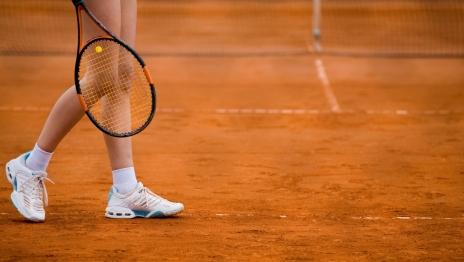
Sport scientists say training on clay courts sets tennis players up for success on all court surfaces.
Victoria University's Institute for Sport, Exercise and Active Living researcher Dr James Zois said more than 80% of the world's top-ten players spent at least half of their training lives battling it out on the red dirt. That figure is much lower for many of Australia's top players.
Studies show an average clay court rally lasts 7-8 seconds, while those on hard courts last 6-7 seconds and grass courts just 2-3 seconds.
"Playing on a slower surface with longer rallies teaches players discipline, patience and how to effectively construct the longer points which dominate play on European dust," he said.
"This increased match time, along with the lower chance of injury for players on clay courts, provides players with an ideal opportunity to develop strategic fundamentals involved in tennis."
The physically taxing nature of playing on clay has also been shown to produce increased physiological responses, compared with hard courts, such as:
- greater utilisation of the aerobic metabolism
- increased heart rate and blood lactate concentration
- increased energetic cost and perceptual loads.
The slower incoming ball on clay means players are also required to generate more of their own power, rather than utilising their opponent's incoming kinetic energy to counterattack during rallies, he said.
"The combination of an enhanced exercise capacity and tolerance to prolonged match play and a better understanding of point construction is a winning formula, not only on clay, but also on the now-slower hard courts," he said.
He said the gap between hard-hitting serve-and-volleyers and aggressive baseliners is closing, and the baseliners have already made their mark on the faster grass and hard court grand slams.
Rafael Nadal is one example of a top player able to mould a classic clay court game into an all-round style, potent on all of the four major surfaces, making him the first male player in tennis history to simultaneously hold grand slam titles on clay, grass and hard courts.
He said this realization of the importance of clay courts in developing top tennis players was behind Melbourne Park's recent redevelopment that included the construction of eight new clay courts. This is in addition to the Australian Institute of Sport's European training base in Italy which includes provisions for touring tennis players to gain further experience on the dirt.
"It's yet to be seen whether this will be enough to help Australian tennis players nudge into the top echelon of the sport and perhaps take the Australian Open crown in the coming years, but it's in the right direction at least," he said.
Dr Zois' full article is available on The Conversation website.
